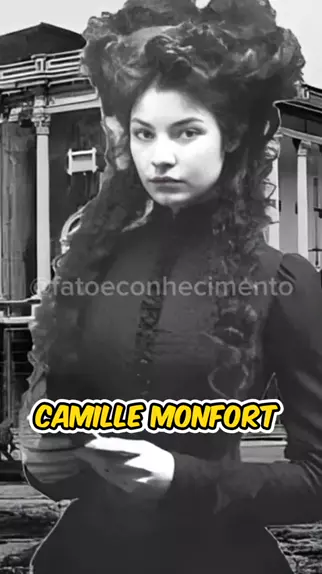Is Camille Monfort truly a historical figure or merely a figment of our collective imagination? A beautiful French opera singer who supposedly captivated the Amazonian city of Belem in the late 19th century, her story has sparked fascination and debate alike. As we delve into this enigmatic tale, we uncover layers of truth intertwined with fiction.
The narrative revolves around Camille Monfort, an alleged French opera singer who arrived in Belem during the height of the Amazonian rubber boom. At the time, the city was bustling with newfound wealth, its elite indulging in imported luxuries and European culture. The Theatro da Paz served as the epicenter of cultural life, hosting performances by renowned artists from across the continent. Among these performers, Camille Monfort stood out not only for her vocal prowess but also for her striking beauty and unconventional demeanor. Her presence stirred both admiration and controversy, igniting passions among the wealthy patrons while inciting jealousy among their spouses. Legends suggest that Camille's allure extended beyond mere physical attraction; she purportedly possessed qualities akin to those of mythical creatures, leading some to dub her The Amazonian Vampire.
| Bio Data & Personal Information | Career & Professional Information | ||
|---|---|---|---|
| Name: | Camille Monfort | Profession: | Opera Singer (Alleged) |
| Date of Birth: | 1869 | Years Active: | Late 19th Century |
| Date of Death: | 1896 | Notable Performances: | Theatro da Paz, Belem, Brazil |
| Place of Origin: | France (Claimed) | Associated Movements: | Folklore Legends |
| Physical Description: | Beautiful, captivating features | Contemporary References: | Wikipedia |
Despite the allure of her story, evidence supporting Camille Monfort's existence remains elusive. Investigations reveal that much of what we know about her stems from internet hoaxes and AI-generated content. For instance, images purportedly depicting Camille were created using advanced algorithms like Craiyon, further blurring the line between reality and fabrication. This raises questions about how folklore evolves in the digital age, where technology enables the creation of compelling narratives devoid of factual basis.
Nevertheless, the legend persists due to its fascinating elements. Set against the backdrop of Belem's opulent social scene, Camille's character embodies themes of freedom and defiance against societal norms. She reportedly flouted conventions, embracing behaviors considered scandalous at the time. Such traits resonate deeply within modern audiences, contributing to the enduring appeal of her tale. Moreover, her association with vampire lore adds an extra layer of intrigue, drawing parallels between her supposed powers of seduction and supernatural entities.
In 1896, Belem reached its zenith as a hub of economic prosperity fueled by the rubber trade. Wealthy plantation owners transformed the region through extravagant investments, constructing lavish residences adorned with European materials. Their families maintained ties with the Old World, sending garments abroad for cleaning and importing luxury goods such as mineral water from London for personal use. Against this backdrop, the arrival of Camille Monfort would have been nothing short of extraordinary. Her performances at Theatro da Paz became legendary, leaving indelible marks on those fortunate enough to witness them. Yet, they also sparked tensions within the community, highlighting class divisions and gender dynamics prevalent during that era.
As interest in Camille Monfort continues to grow, so too does skepticism regarding her authenticity. Scholars and enthusiasts alike grapple with distinguishing fact from fiction, acknowledging the power of storytelling in shaping collective memory. Whether she existed historically or serves merely as a symbol of romanticized escapism, Camille's legacy endures. It reminds us of humanity's penchant for weaving elaborate tales, whether inspired by genuine events or conjured entirely from imagination.
Today, discussions surrounding Camille Monfort extend beyond traditional media platforms into podcasts and online forums. Episodes like Freaky Folklore: The Amazonian Vampire bring her story to wider audiences, sparking curiosity and debate. While some view her tale skeptically, others embrace it wholeheartedly, finding inspiration in its fantastical elements. Regardless of perspective, there is no denying the impact Camille Monfort has had on popular culture, serving as a testament to the timeless allure of mysterious figures shrouded in myth and mystery.
Ultimately, the question remains: Was Camille Monfort a real person whose life has been distorted over time, or is she entirely a product of contemporary creativity? Perhaps the answer lies somewhere in between, reflecting broader truths about human nature and our desire to create meaning from ambiguity. As long as her story captivates imaginations worldwide, Camille Monfort will continue to occupy a unique place within the annals of folklore, inviting each new generation to reinterpret her legend anew.




